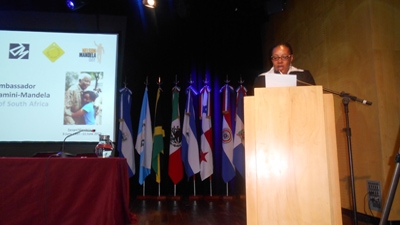In terms of road safety, Latin America ranks number one in the tragic global ranking of regions with the highest number of deaths from road traffic accidents.
Each year it is estimated that a lack of road safety in the region results in nearly 130,000 deaths, some six million injuries and some form of disability for hundreds of thousands of people. For people aged 15 to 44, the figures are even more distressing: for this age group, traffic accidents are the leading cause of death.
Key factors driving up the number of fatalities include the poor condition of part of the region’s road network, drink-driving and not using seat belts or helmets.
Zenani Mandela, the daughter of former South African President Nelson Mandela and current South African Ambassador to Argentina, has joined the campaign to reduce traffic deaths.
During the third road safety meeting, held in Buenos Aires last week, Zenani Mandela said “We cannot wait any longer to act when we know that there are children who will die on the roads.” As she spoke these words she was visibly upset by the memory of the death of her granddaughter, who was hit by a car in 2010.
“This is a global epidemic. But unlike other health crises, we know exactly what to do: enforce speed limits, improve pedestrian crossings and sidewalks, make vehicles safer and raise awareness through education,” said Ambassador Mandela.
Her words have special significance in Latin America, which has the highest rate of road fatalities in the world (19.2 deaths per 100,000 inhabitants, more than three times the rate of some European countries). The rate for South America is two points above the regional average and more than double that of Europe.
During the event, which was attended by government representatives from the region and multilateral agencies, experts discussed the measures adopted in Latin America during the UN Decade of Action for Road Safety and encouraged the development of regional and national road safety plans.
According to José Luis Irigoyen, Director of the World Bank’s Transport, Water and Information and Communication Technology Unit, the challenge of road safety is not only a public health problem; it also represents a threat to economic development.
“Motor vehicle accidents represent between 1% and 3% of GDP of the world’s countries. In addition, the lack of road safety has a greater impact on the most vulnerable population groups,” he said.
For that reason, Irigoyen stressed the need to strengthen the joint efforts of the transportation and health sectors in an effort to promote multisectoral actions which are sustainable over time.

